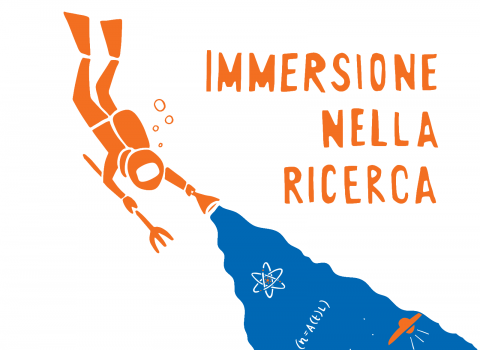
Observing the atmosphere from high altitude: the mystery of Terrestrial gamma rays
FBK and the Società Alpinisti Tridentini (SAT), the Trentino mountaineers association, join to implement the PIZ-Gamma project, advancing a further exercise of the DomoSens model dedicated to high schools that will take them on a school-to-work experience in close contact with research.
Five years after the wonderful experience of the SenSAT project, Fondazione Bruno Kessler (FBK) and the Società Alpinisti Tridentini (SAT) are meeting again to implement the PIZ-Gamma project, advancing a further exercise of the DomoSens model dedicated to high schools (7 schools involved) that will take them through a school-to-work experience in close contact with research.
This time the scientific content has been suggested by the National Institute of Astrophysics (INAF), an institution that has been cooperating with FBK for years in the field of scientific satellites with a focus on special sensors designed to collect X-ray and gamma-ray cosmic radiation.
The scientific input comes from the Observatory of Astrophysics and Space Science, INAF section of Bologna, which, in collaboration with ASI, CNR/ISAC, Universities of Padua and Rome Tor Vergata, has set up an experiment dedicated to the collection of X / gamma signals from the “Ottavio Vittori” Observatory of Mount Cimone (2165 m above sea level). The goal of the experiment is to study the phenomena involved in the production of this radiation in the upper atmosphere (15-20 km altitude) known as Terrestrial Gamma-ray Flashes (TGF) produced during lightning episodes during thunderstorm events.
The energy in these events is so high that they can be detected by space satellites, placed at an altitude of 500-600 km (the so-called low Earth orbit), in particular the AGILE satellite is a most efficient observatory for these phenomena. In contrast, there are very few detections of these gamma flashes from the ground or aircraft.
The iinterest aroused by these events are certainly scientific, driven by the desire to understand the physical processes underlying the production of X- and gamma radiation, but an equally important aspect concerns the effect of such radiation on humans and radiation-sensitive electrical/electronic equipment. While radiation at sea level is greatly attenuated by the atmosphere and thus has negligible impact on humans, at altitudes on the order of tens of kilometers the effect could be significant and impact, for example, the safety of flight instrumentation. In fact, a gamma ray can damage electronic components on aircraft and therefore potentially be a source of danger.
Thus, the PIZ-Gamma project oiginated, that takes the first part of its name from the place picked for the installation of the measuring station: the PIZ BOÈ, near the mountain lodge, which, at 2871 m., exceeds by as much as 700 m Mount Cimone and makes this site particularly suitable, given the reduced protective effect of the atmosphere.
On this occasion, in addition to SAT, which will host the data collection unit at its Boè mountain lodge, Meteotrentino will also participate in the project to collect meteorological data on site and to meet with schools and let them learn more about weather aspects. An attempt will also be made to build a weather station based on commercial components and sensors to evaluate the possibility of collecting reliable weather data at low cost, with the aim of increasing data points and, thus, the observational capacity of weather conditions from the ground.
The Museum of Science (MUSE) will contribute an educational workshop at its venue.
Following the DomoSens model, whole classes from different schools will participate in the project, so as to approach the topic covering different aspects, experience teamwork among different education backgrounds, in a realistic simulation of today’s complex world of work.
The project has obtained the endorsement of and support from both INAF and Fondazione CARITRO.
It will start on 1October 12, 2023 and end in the fall of 2024.
Proposing entity:_______
Fondazione Bruno
KesslerParticipating researchunits: CRS, DSIP, MNF, RIS
The high schools involved are as follows:
CFP G. Veronesi (Rovereto) Galilei
High School for science (Trento) Curie
High School for science
(Pergine) Buonarroti High school for Technology
(Trento) Marconi High School for Technology
(Rovereto) Lorenzo Guetti High School (
Tione) Alcide Degasperi High School (Borgo Valsugana)

